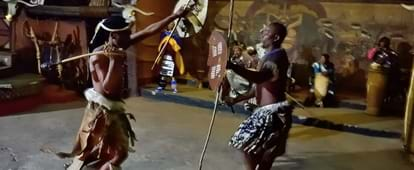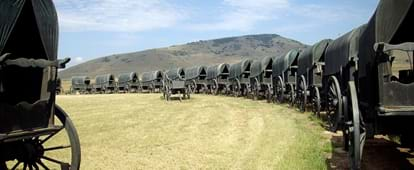By creating an account, I agree to the
Terms of service and Privacy policy
Choose your country and language:
Africa
Americas
Asia Pacific
Europe
SSouth African society is a fascinating blend of many and varied cultural groups that rub along together in a manner that is, for the most part, peaceful and happy. A historical tour of famous battle sites will bring home to you just how remarkable this is.
The clashes that occurred in this strife-torn land are brought to life as you stand on remote expanses of once blood-soaked ground where Dutch, British, Xhosa, Voortrekker, Matabele, Zulu, Boer and others fought to the death. The beauty (if one can call it that) of the battle sites in South Africa is that they are, for the most part, unchanged. They haven’t been altered by urban development or sophisticated theme parks or ordered graveyards as they have been in many other parts of the world. Often, the graves of fallen soldiers lie close to where they fell in battle, and this gives a unique insight into troop movements during the battle.

II have yet to meet a visitor to the battlefields who, after hearing the story of the battle of Isandlwana, a strange, sphinx-shaped mountain in KwaZulu-Natal, has not been moved beyond words. It was there that the British and the Zulu armies clashed in 1879. The British were well equipped with modern weaponry but were outnumbered and out-manoeuvred by the Zulu generals, and 1 329 British soldiers were killed on the battlefield that fateful day. The terrifying sounds of violent slaughter seem to reverberate still, between the lonely white cairns that mark mass graves.
The highest concentration of South African battlefield sites is in KwaZulu-Natal, where Zulu, Brit and Boer battled it out over a turbulent period lasting almost 70 years. Conveniently, the major battles all occurred within a fairly small area in the north of the province, which makes it possible to visit sites of four different wars, spanning 60 years, in only a few days. A tour to KZN could include the Voortrekker/Zulu Battle of Blood River, with its emotive ring of life-sized ox-wagons; battles fought during the Anglo-Zulu War of 1879, including Rorke’s Drift, and the lonely site of the death of the Prince Imperial of France. It could also encompass the iconic battle of Majuba where the Boers won a decisive victory over the British during the 1880/1 Transvaal War of Independence. And it would also include many battlefields of the South African War (Anglo-Boer War) of 1899/ 1902.
In the last category falls Spioenkop, one of the most spectacular battlefields in the world. On this hilltop of carnage, the British attempted in vain to break through the Boer defensive line that prevented them from reaching Ladysmith. White-washed stones lining a mass grave reach eerily over the summit of the hill, against a backdrop of the Drakensberg mountains.
TThere are battlefields and magnificent monuments in the Free State too, many of them associated with British attempts to relieve the diamond-mining town of Kimberley that was besieged by the Boers at the outbreak of the South African War of 1899/1902. Two such battles were the Battle of Modder River and the Battle of Magersfontein. They are both well worth a visit. There are also battlefields in Gauteng, while in Mpumalanga is one of the most beautiful monuments of the war, commemorating the Battle of Bergendal.
Along your route you may come across remains of blockhouses, a stark reminder of the closing phases of the war, and the grim sites of historic concentration camps, where tens of thousands of blacks and Boer women and children died during the British “scorched earth” phase of the war.
Both the McGregor Museum in Kimberley and the Anglo-Boer War Museum in Bloemfontein house excellent exhibits and superb displays that will greatly add to your grasp of the war as a whole.
There are some more remote sites that are well worth seeking out, like the Bloukrans Monument in KZN, standing sentinel over the area where more than 230 women, children and servants were brutally murdered by Dingaan’s warriors in 1837. Or the lonely site where the Prince Imperial of France lost his life when campaigning with the British in 1879.
It has been said that it is more important to know about the past than it is to speculate on the future. If you don’t know where a nation has come from how can you possibly speculate on where it is going? A historical tour of the battlefields will leave you with a much deeper understanding of the land and its people, and an unforgettable impression of remote and beautiful rural landscapes that the average tourist doesn’t get to see.


AAbout the author
Nicki von der Heyde read English and History at UCT, and much later combined her love for both travel and South African war history by becoming a specialist guide to the Anglo-Zulu and Anglo Boer War battlefields in KwaZulu-Natal. Known for expert knowledge and passion for her subject, she has recently added the mysterious and beautiful Trappist monasteries in southern KZN to her programme. Her first book, Field Guide to the Battlefields of South Africa, was shortlisted for the Nielsen Award. She is a Fellow of the Royal Geographical Society and an honorary life member of the Anglo-Zulu War Historical Society.
Related artciles

|Terms and conditions|Disclaimer|Privacy policy|Social Media Terms and Conditions|Competition Terms and Conditions
